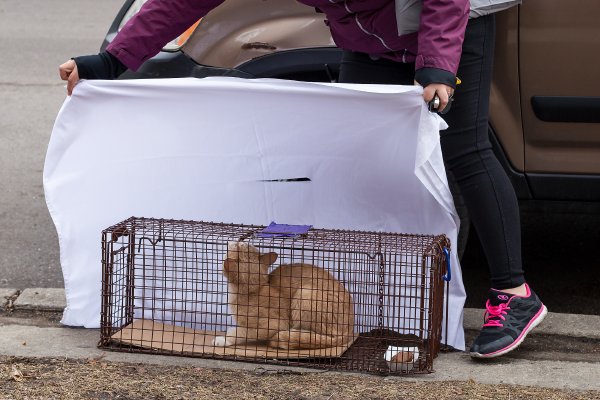Changing the World, One Spay/Neuter at a Time
Jul 18, 2022
There has been a tidal wave of change for homeless pets, and we’ve seen firsthand that spay/neuter is the way to end the killing.

Since our founding in 1997, citywide euthanasia has plummeted 91%. And it’s in large part thanks to PAWS’ high-quality, high-volume, free and low-cost spay/neuter services.
But making this kind of impact involves a lot more than wandering the streets to find un-fixed strays. It’s a highly coordinated, consistent operation involving close relationships with the community to help manage outdoor cat colonies while supporting their natural habitat.
“We send out trapping teams on a Monday to specific locations we've scheduled ahead of time,” said Yasmine Pacheco, PAWS Chicago Community Outreach Manager.
PAWS tries to tackle large projects and decides where to go based on information collected from community members via our Pet Help Hotline as well as animal control—we go wherever we’re needed most.
“This last Feral Spay Day, we involved a lot of our independent trappers that work on their own colonies, and they basically volunteered to help us trap as many as we could,” said Yasmine.
As a result, we were able to humanely trap over 60 strays in a single day, focusing on adult cats.
“It’s all based on food and us hiding. When the cats go in the baited trap, they step on a plate in the back and then it closes behind them, so you don't have to touch them, and nobody is at risk of getting bitten or scratched.”
The feral cats are then brought to the Lurie Clinic and stay overnight. Our team works hard to make sure they’re as comfortable as possible.
“There’s a divider in the cage to keep them on one side so we can give them fresh bedding, water, and food for the night, and then they get surgery the following morning.
After anesthesia, they’re removed from the trap and spay/neuter surgery is performed.
“That's pretty much it. They get food and stay overnight because they've had surgery and it’s for their safety. We change their bedding, give them food and water again in the morning, and then they get released that same day.”
Cats who are especially social are considered for our adoption program. During this past Feral Spay Day, we happily accepted 14 cats into the program.
“We assess their friendliness based on how they act in the cage. For example, if they're coming up and rubbing against it, that's showing friendly behavior. When that happens, we ask the medical team to add some tests to their services and that gets the process started.”
Whether returned to their colony or adopted, we’re making a difference one spay/neuter at a time, working toward a No Kill equilibrium where the number of strays is in balance with our capacity to care for them.
“The more we do this, the more cats we can get off the street and help reduce overpopulation.”
Interested in helping feral cats in your community? Learn more about our Community Cats Program.
